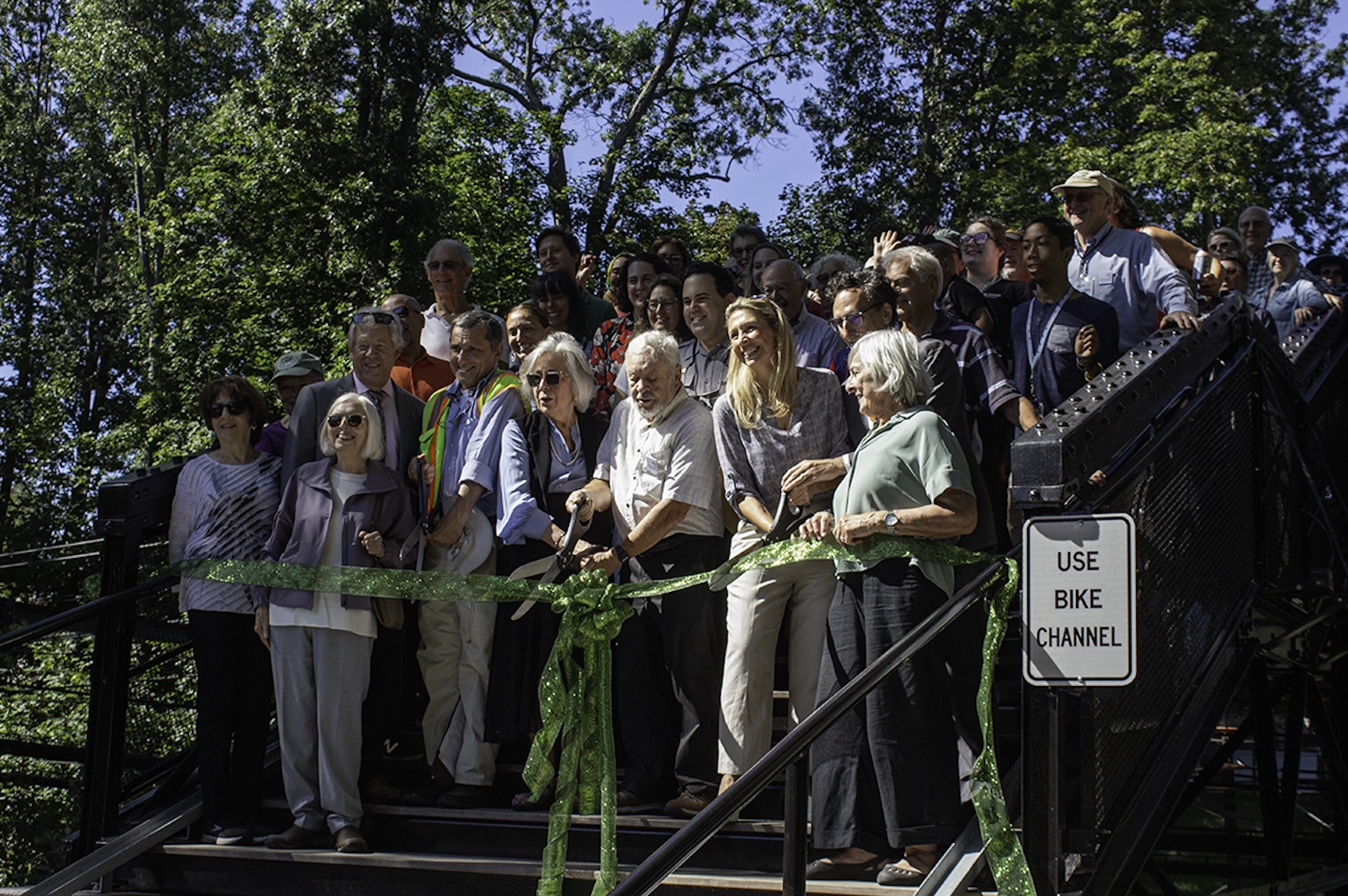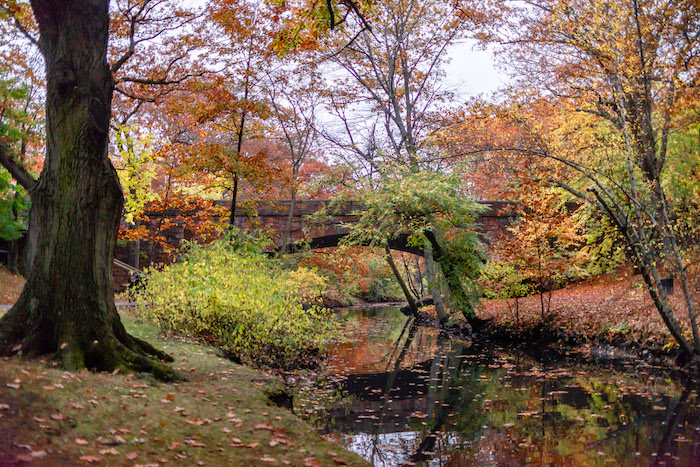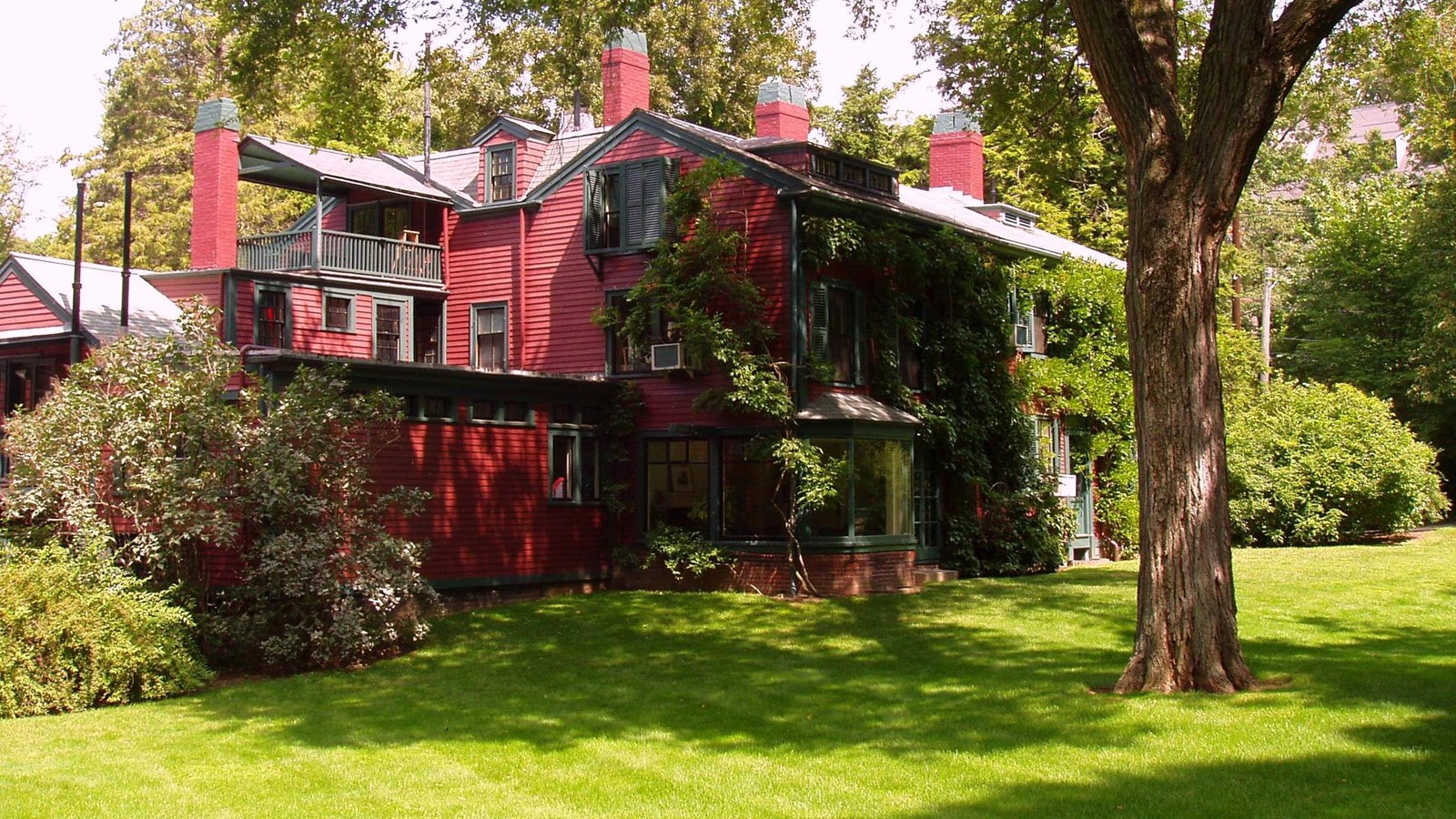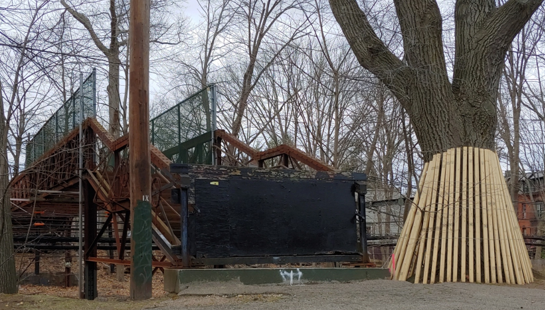
The current effort to restore the Carlton Street Footbridge (CSF) started in 1998 with a Request for Proposal (RFP) posting by Brookline, Mass. It stated that “deferred maintenance over the past several decades has left the structure in a deteriorated and vulnerable state.” Brookline, home to some 60,000 people, borders Boston and shares the Muddy River portion of the Emerald Necklace linear park system, which was designed by Frederick Law Olmsted. The CSF sits within Riverway Park on the Brookline side of the Muddy River and, like many other elements of the park system, has not received necessary maintenance over the previous half-century.
Built in 1894 but closed for the last 45 years, the 108-foot steel truss CSF spans the former Boston & Albany Railroad. tracks. It was designed by Alexis H. French, Brookline Town Engineer, as the primary access point to Riverway Park from the Cottage Farm/Longwood residential neighborhoods. Since 1998, the town has been embroiled in an often bitter debate, which has included a number of warrant articles dealing with demolition, restoration, and funding. Arguments against restoration centered around the lack of historical significance since the bridge did not look like many of the other bridges in the park. Some people also believed that restoration would “invite crime” into the neighborhood. Supporters cited the need for this “vital link” to connect the neighborhood to Riverway Park. This connection was important to them because it is thought to be an important part of Olmsted’s vision for the Emerald Necklace.
In 2002, the Massachusettes Secretary of Energy and Environmental Affairs in a Draft Environmental Impact Report Certificate stated, “I find that the Carlton Street Footbridge is historically significant and is an integral component of the Olmsted Park System, and its eventual rehabilitation and reopening is an established part of the wider Emerald Necklace rehabilitation effort.”
Since 2011, Brookline’s application for 90% funding through the MassDOT Transportation Improvement Program (TIP) has very gradually risen to the top of their priority list.
Finally, with dogged persistence by Brookline Engineering staff, all the required permissions and rights of way have been secured, and the restoration project, including extensive ramping for handicap-accessibility, started in the spring of 2021. Large red oaks were pruned and protected, smaller trees and brush cleared. The Bridge was removed by a team of some 30 welders, crane operators, truck drivers, and assorted supervisors on June 5. Aetna Bridge Co. in Warwick, RI trucked the trusses to Coventry, RI, for sandblasting and powder-coating. For a view of the site just before removal, please click here.
As of late September, concrete footings and steps have been poured. Treads and decking will also be replaced. The Project should be completed in spring, 2022. Questions? Please contact Hugh Mattison, Brookline Town Meeting Member and Citizen Advocate at hmattison@aol.com.
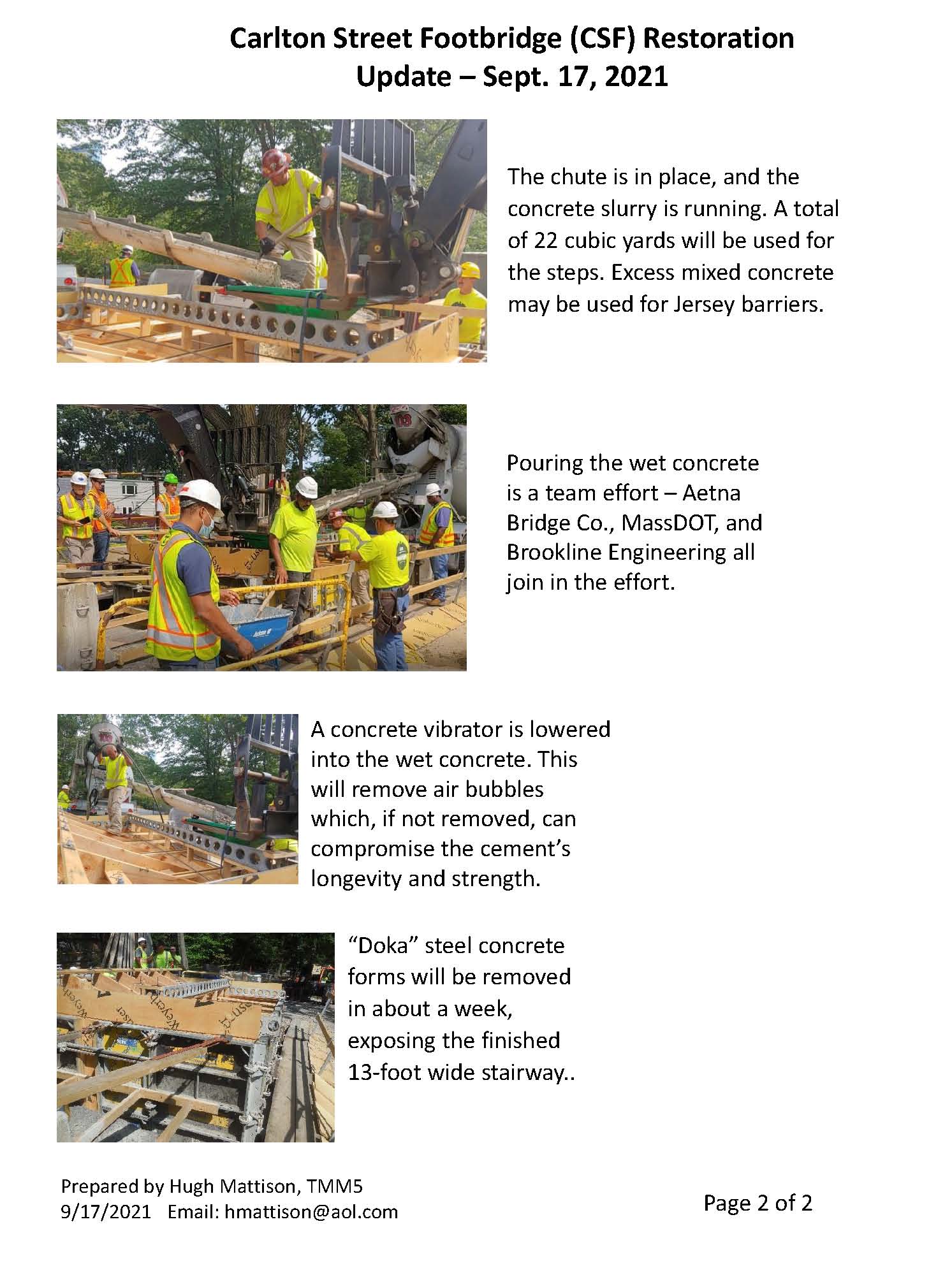
This article first appeared in the October 1, 2021, issue of Field Notes by the National Association for Olmsted Parks.









